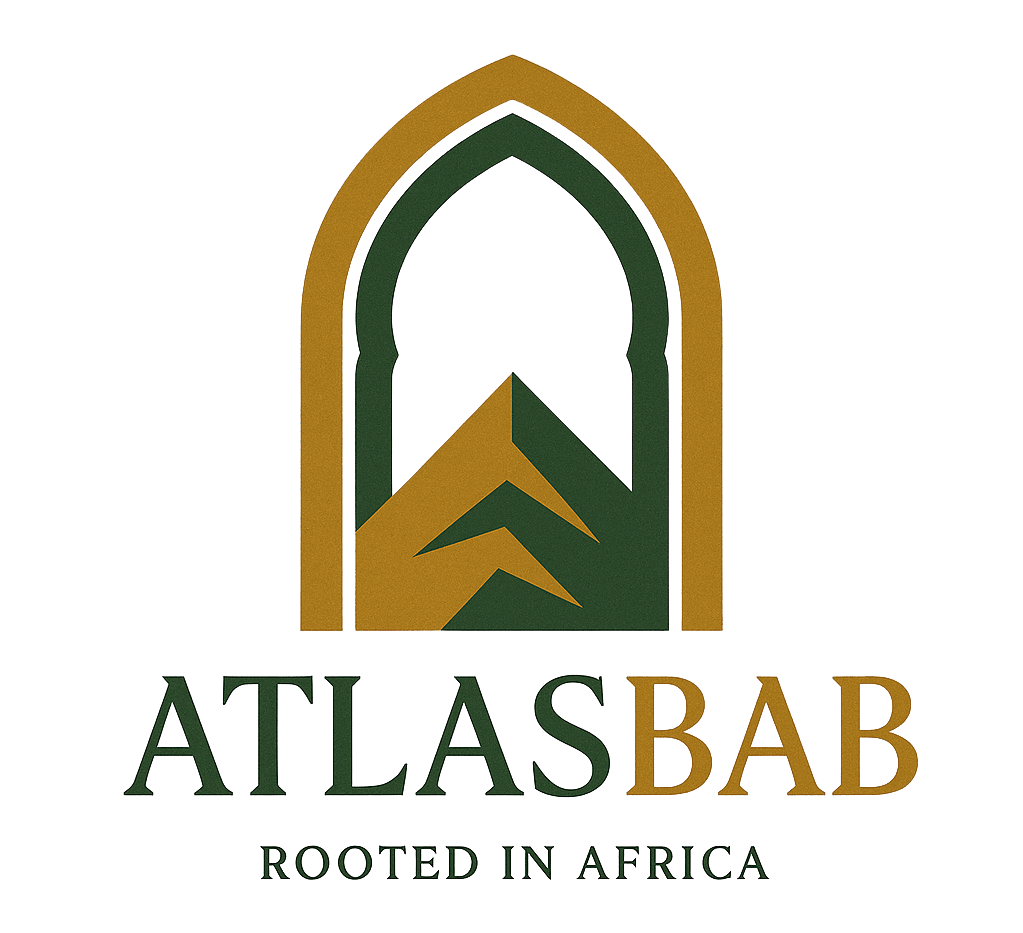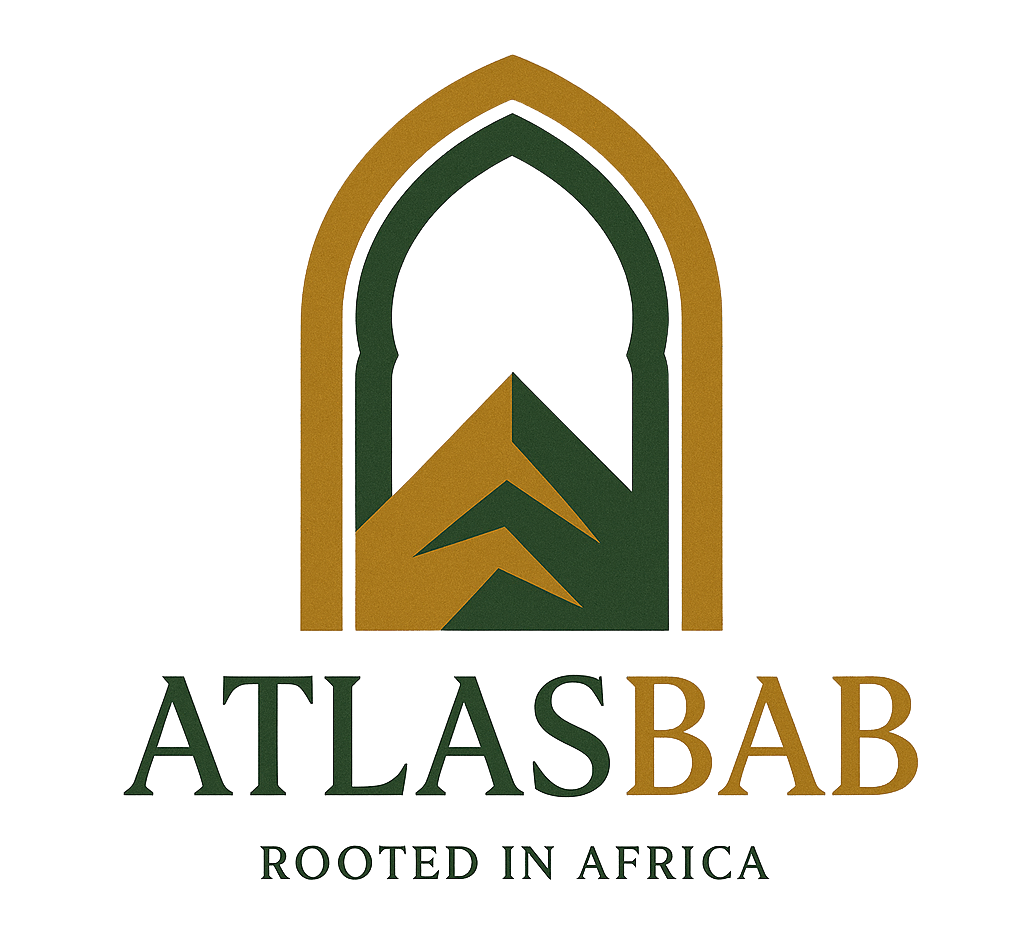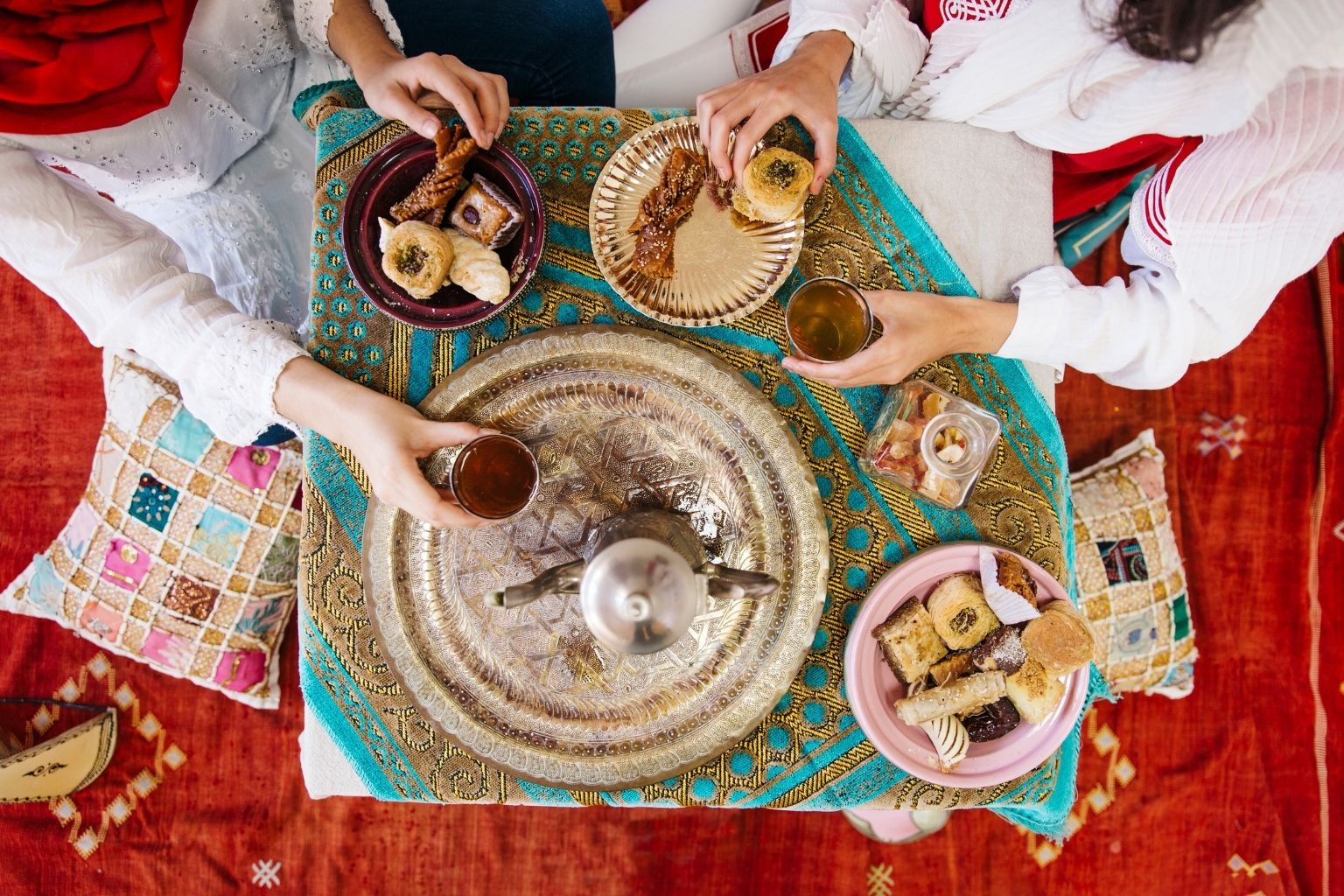Morocco—a land where ancient traditions merge seamlessly with vibrant culture, and where every corner of the country is filled with stories, colors, and rhythms that have stood the test of time. From the bustling souks of Marrakesh to the quiet beauty of the Atlas Mountains, Morocco’s traditions and culture are as varied as its landscapes. These traditions have not only been passed down through generations but have also adapted to the influences of diverse civilizations, creating a cultural tapestry that is as unique as it is rich.
But what does it mean to live in a land so steeped in history? What are the traditions and cultural practices that define Morocco, and how do they shape the lives of its people today? Let’s take a closer look at Morocco’s traditions and culture—one that is deeply rooted in the past, yet continually evolving.
Cultural Roots: A Rich Tapestry of Traditions
Morocco’s cultural identity is firmly rooted in its indigenous Berber (Amazigh) heritage. The Amazigh people have lived in the region for thousands of years, long before the arrival of Arab and Roman influences. Their culture, language, and customs are still central to Moroccan identity today. The Berber influence is most visible in rural areas, where traditions remain strong and people continue to live much as they have for centuries.
The Amazigh language, Tamazight, is still spoken across Morocco and is an important symbol of the country’s rich history. The Tifinagh script, used to write the language, is a powerful emblem of the Amazigh people’s resistance to outside influence. Many Moroccans take pride in their Berber roots, and the Amazigh culture is celebrated through music, dance, and festivals.
In addition to Berber traditions, Morocco’s culture has been shaped by Arab, Jewish, and Andalusian influences, creating a beautiful cultural fusion. The Arab influence, which began with the spread of Islam in the 7th century, introduced new religious practices, art, and architecture. The Andalusian refugees who fled Spain in the 15th century brought with them an exquisite blend of music and way of life which can still be seen in cities like Marrakesh and Fes.
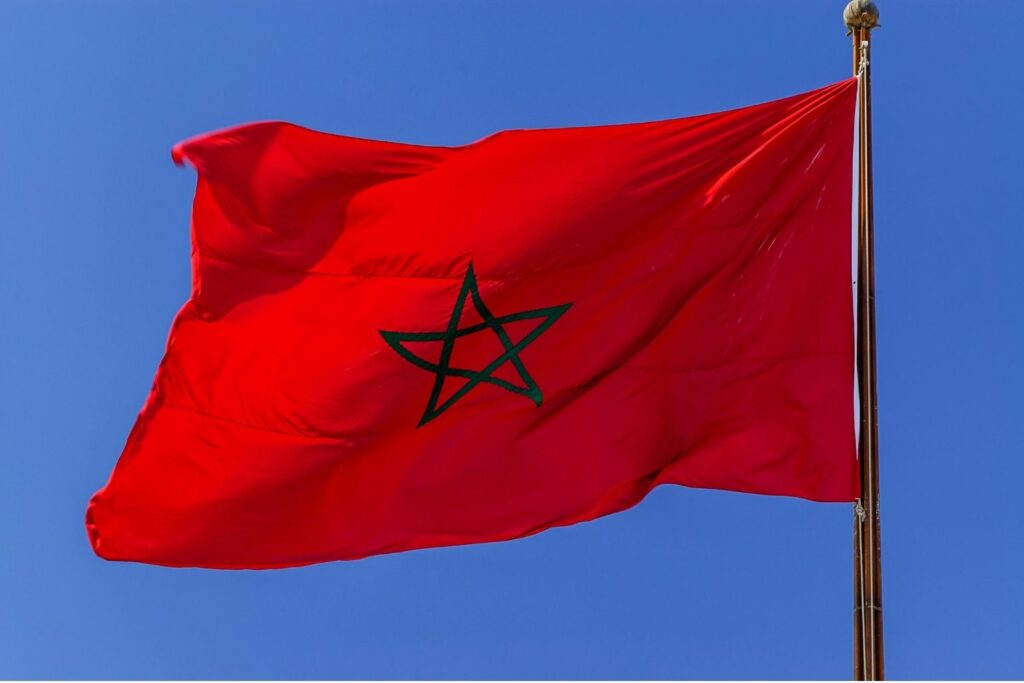
Celebrating Moroccan Traditions: Festivals and Rituals
One of the most distinctive features of Moroccan culture is its deep connection to festivals and rituals, many of which celebrate the passage of time, the harvest, or religious observances. These festivals are not only about celebration—they are a way of maintaining cultural continuity and honoring the values and history of Morocco’s diverse communities.
The Festival of the Roses, held annually in Kalaat M’Gouna, celebrates the blooming of roses in the Dades Valley and is a celebration of the region’s heritage, including its agricultural traditions. The festival showcases traditional music, dance, and crafts, and visitors can witness the preparation of rose water, which has been a part of Moroccan culture for centuries.
Eid al-Fitr and Eid al-Adha, two of the most important religious celebrations in Morocco, mark the end of Ramadan and the sacrifice of a sheep in the name of charity, respectively. These celebrations bring families together, with special feasts and prayers. The sense of community and togetherness during these holidays highlights the strong ties that bind Moroccan families and communities.
Moussem festivals, held in various cities and towns, are a way for Moroccans to connect with their spiritual and cultural heritage. The Moussem of Tan-Tan is one of the largest, where nomadic tribes from the desert gather to celebrate their traditions through music, dance, and games.
These festivals are not just about celebrating; they are a way of reinforcing cultural identity and passing down traditions to the younger generations. Whether it’s the arts of storytelling, music, or the creation of handwoven carpets and pottery, these traditions are preserved and cherished by Moroccan families.
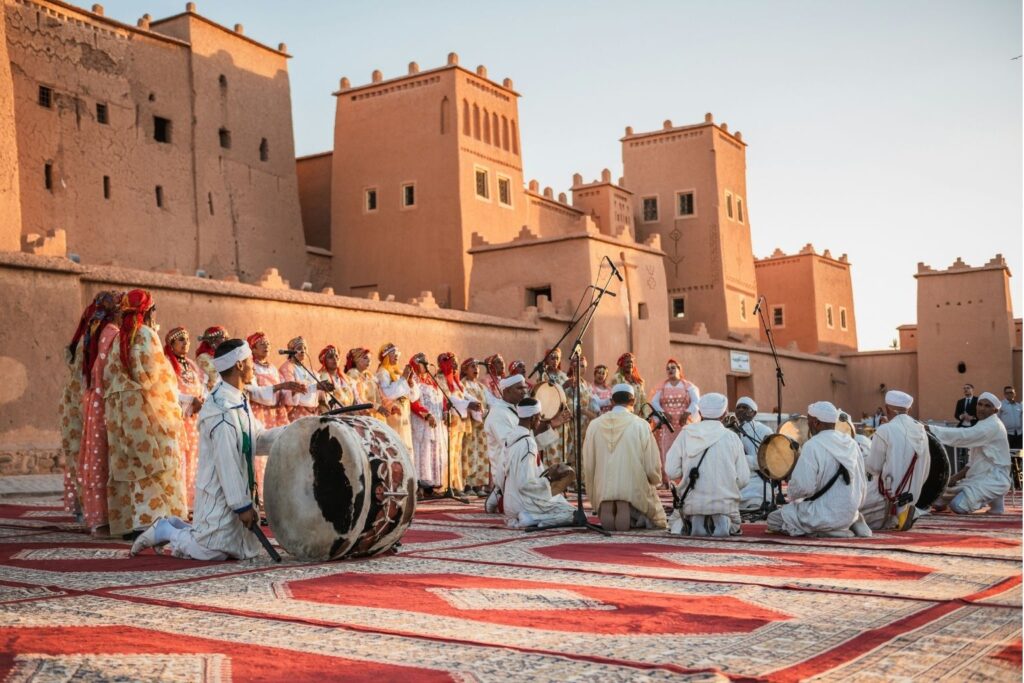
Craftsmanship: Preserving the Past Through Art
Moroccan craftsmanship is another pillar of the country’s rich cultural heritage. The techniques used to create traditional Moroccan art and craft have been passed down through generations, often within families or communities. From the intricate patterns of zellige tilework, which adorn buildings and palaces, to the rich colors of handwoven Berber carpets, these crafts speak to the skill, patience, and artistry of Moroccan artisans.
In cities like Fes and Marrakesh, the souks are alive with the sound of artisans at work, creating beautiful leather goods, pottery, textiles, and jewelry. These crafts are not just beautiful—they are a symbol of Moroccan identity and creativity. The Berber carpets, in particular, are highly valued for their unique designs, each telling a different story or representing a particular region or tribe.
One of the most significant traditional crafts in Morocco is tadelakt, a form of plastering that creates a smooth, glossy finish. Tadelakt has been used for centuries in the construction of Moroccan homes, palaces, and baths, and it remains an integral part of Moroccan architecture today. It’s an example of how ancient traditions can still have relevance in modern times, seamlessly blending with contemporary styles.
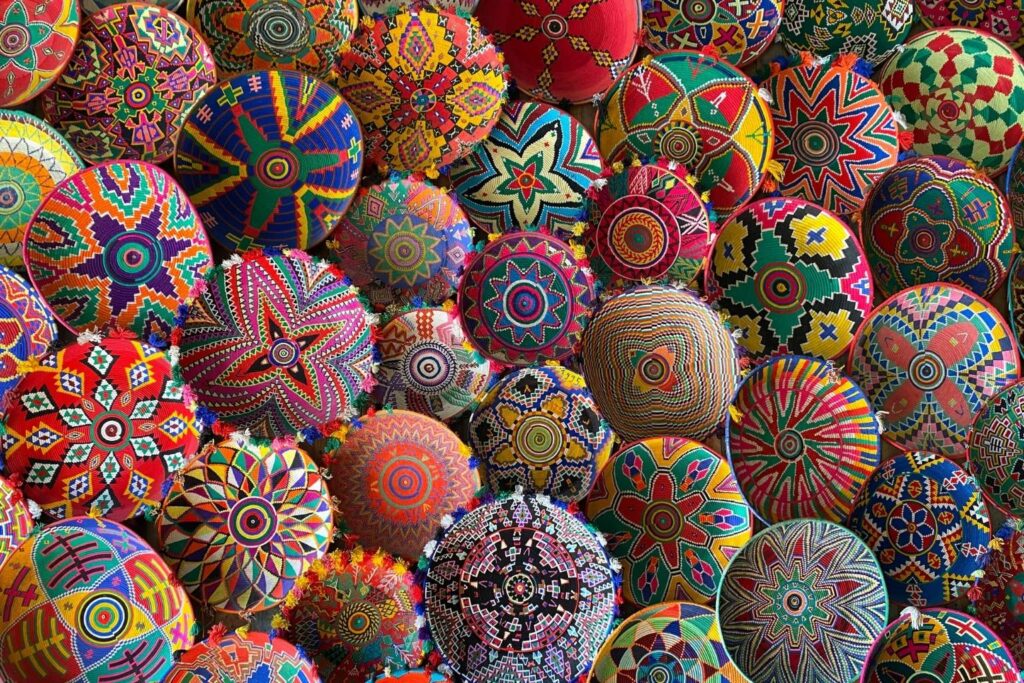
The Role of Music, Dance, and Cuisine
Moroccan music is deeply connected to the country’s cultural diversity. From the Gnawa rhythms of the south, influenced by sub-Saharan African traditions, to the classical Andalusian music that still echoes in the cities of Marrakesh and Fes, music is an essential part of Moroccan life. The Ahidous dance, a traditional Berber dance performed during festivals, is an energetic and expressive form of storytelling that often accompanies music.
Moroccan cuisine is another reflection of the country’s cultural fusion. It is a blend of Arab, Berber, and Andalusian influences, with dishes that range from the slow-cooked tagine to the delicate sweetness of pastilla. Couscous, a dish made from steamed semolina, is often served during important family gatherings and religious celebrations. These dishes, rich in spices and flavors, are a testament to the vibrant cultural exchanges that have shaped Morocco’s culinary heritage.
The act of preparing and sharing meals is a cultural ritual in itself, bringing together family and community. The traditional Moroccan tea ceremony, where mint tea is poured from a height to create a frothy top, is a symbol of hospitality and a cherished practice that has been passed down through generations.
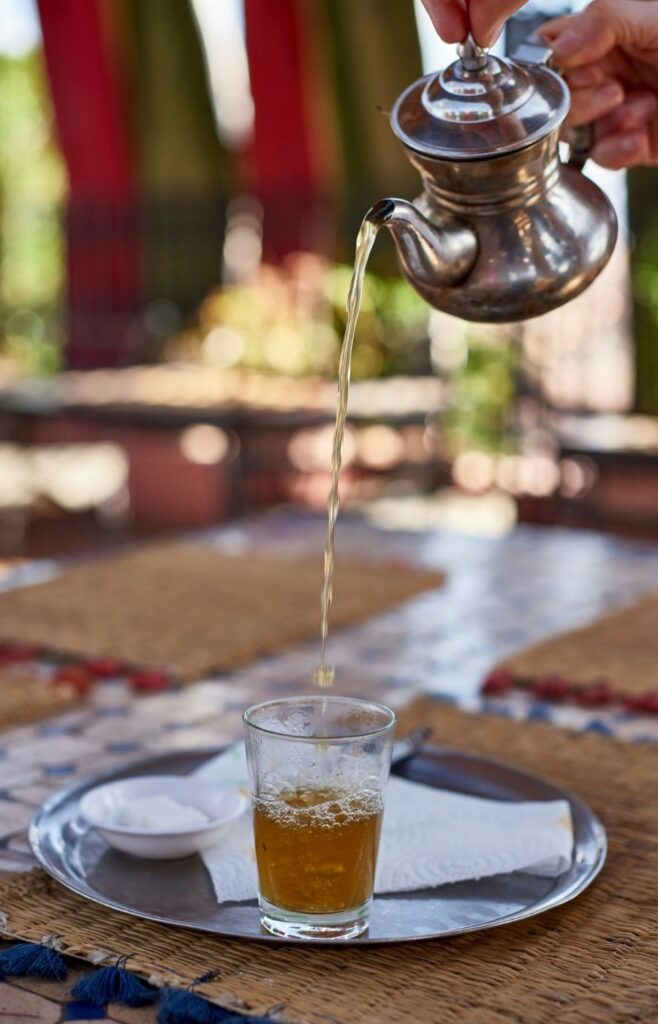
Morocco’s Culture Today: A Living Tradition
Moroccan culture continues to thrive, even in the face of globalization and modernization. While the country has embraced progress and development, it has also remained deeply rooted in its traditions. From the preservation of its unique architecture to the vibrant festivals that mark the calendar, Morocco’s cultural identity is alive and well.
The Amazigh (Berber) culture, despite centuries of external influences, continues to be a powerful force in Morocco. Today, there is a growing movement to preserve the Amazigh language and customs, and efforts to ensure that these traditions are passed on to the next generation are gaining momentum.
At the same time, modern Moroccan culture is embracing global influences, as seen in the thriving music scene, the emergence of contemporary Moroccan fashion, and the growing popularity of Moroccan cuisine worldwide. The fusion of old and new creates a dynamic cultural landscape that is uniquely Moroccan.
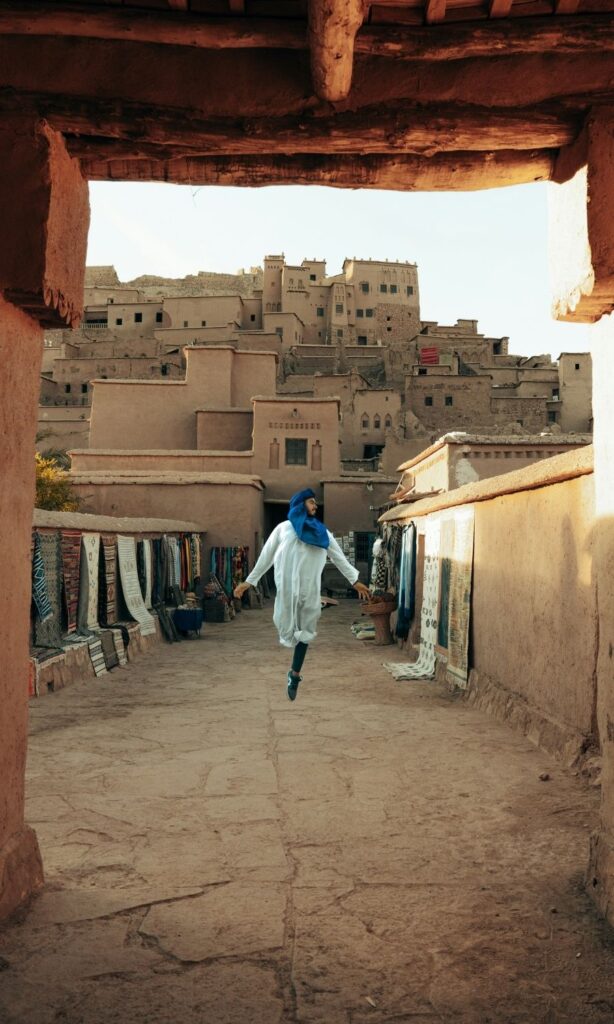
The Ever-Evolving Cultural Tapestry of Morocco
Morocco’s traditions and culture are the living, breathing soul of the country. They are not static relics of the past but are vibrant and ever-evolving expressions of identity, creativity, and history. Whether through the celebration of ancient festivals, the preservation of craftsmanship, or the sharing of meals with loved ones, Morocco’s culture continues to shape the lives of its people.
As Morocco moves forward, its rich traditions and cultural heritage remain at the heart of its national identity. The challenge, and the beauty, lies in preserving these traditions while embracing the new, creating a living culture that honors the past while looking toward the future.
